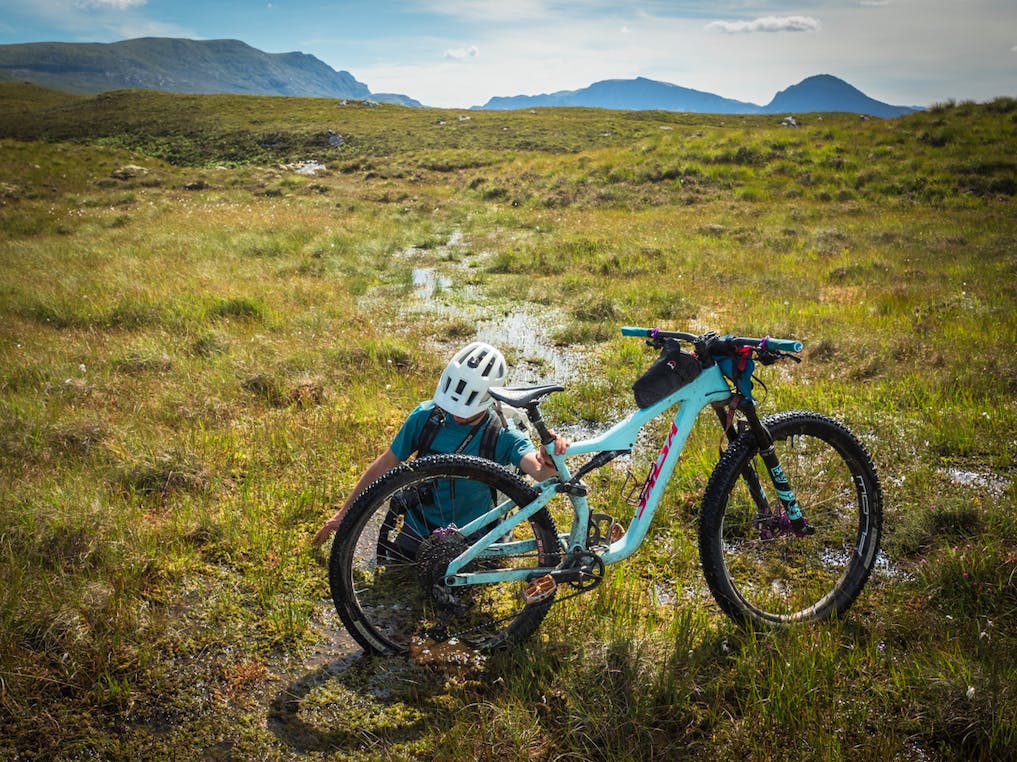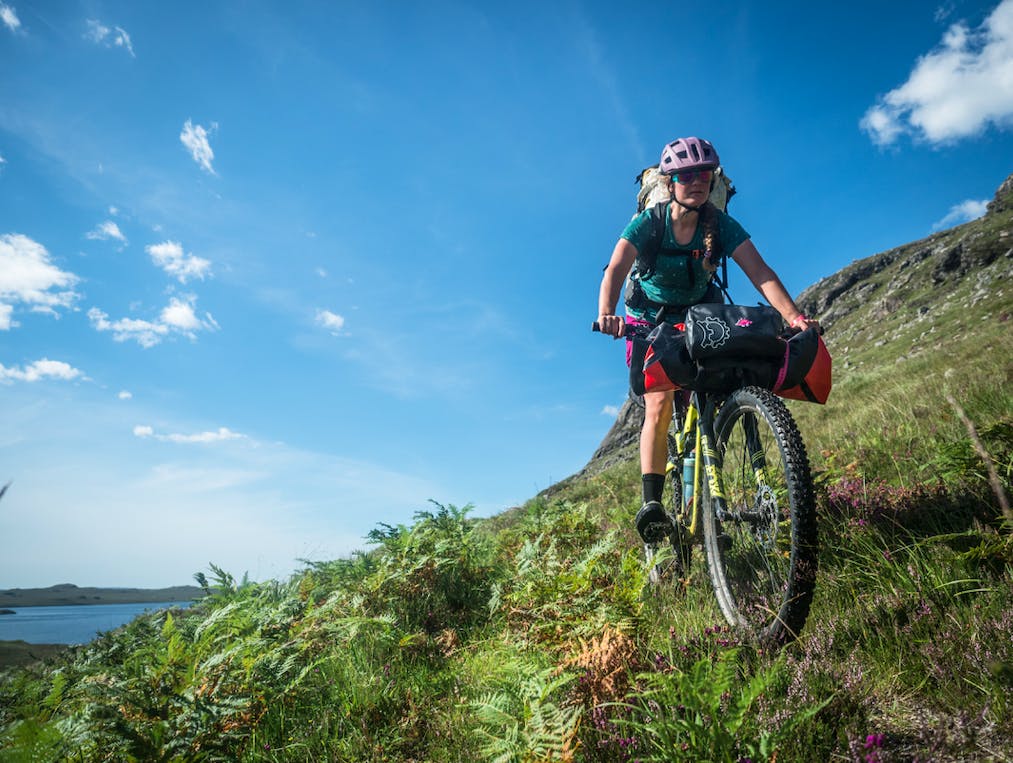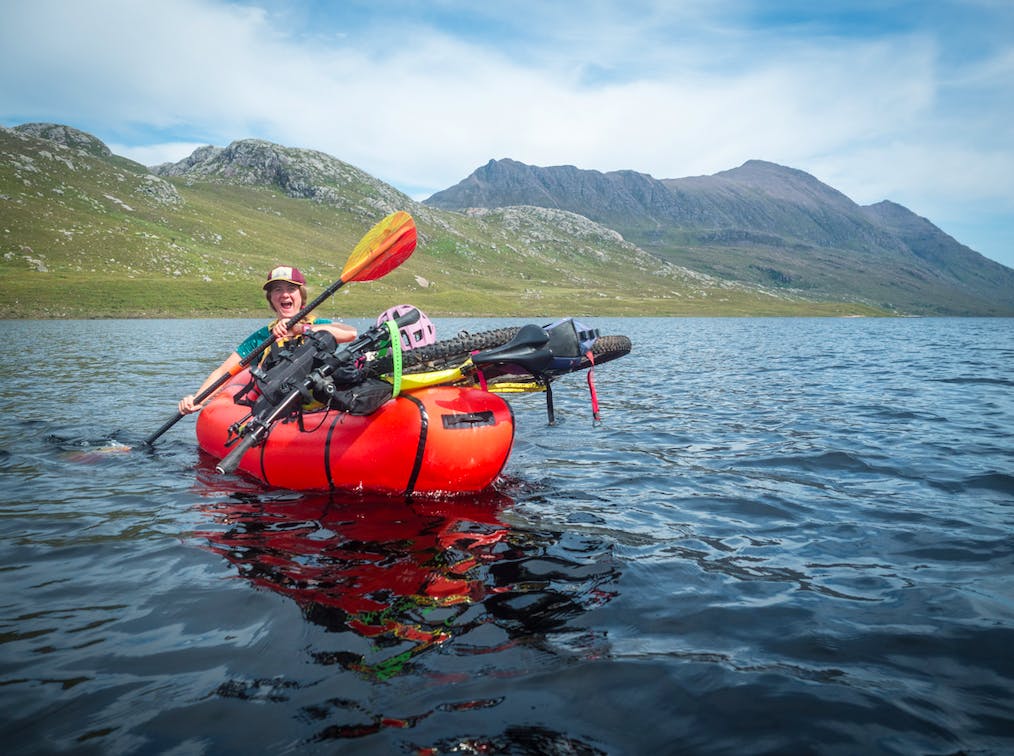New takes on adventures close to home.
Story & Photos by Huw Oliver
Well, 2020 was one hell of a year, wasn’t it? Nobody needs reminding of the ways our lives have been affected by the pandemic, but among the difficulties and hardship there have been a few silver linings to be found, so this blog is a reminder of one of those rare positive sides to the year instead.
If you regularly spend time in the outdoors you’ve probably felt the affects of travel restrictions limiting access to the places you love. Here in Scotland, we were subject to a 5-mile travel restriction for much of the spring and early summer, and that wasn’t even harsh compared to the super-strict conditions of outdoor exercise in other places such as France and Ireland. Our volunteer mountain rescue teams asked hill-goers to stay away for a time, in order to reduce pressure and risk for their members. During the long, sunny spells of a beautiful spring it was a hard thing to see the mountains on the skyline and know that we needed to be responsible and save it for another time. In the grand scheme of things it’s been a pretty minor complaint in tumultuous and painful times, but it’s there all the same.

But anyway, about that silver lining. For people stuck in the stasis of lockdowns, stay-at-home orders and travel bans, exploring our home regions a little more closely has been a release for stress and an outlet for pent-up energy—all the things that make outdoor experiences so important in more normal times, but directed at the space around us, a reminder that we don’t have to travel so far as we think to be inspired and connect to landscapes. The word ‘adventure’ is usually associated with far-off places and exotic names, as if the adventure becomes bigger and better the farther you have to travel to find it. This year I’ve watched people finding adventure much closer to home, filling in the details of places they thought they already knew, finding the same uncertainty, challenge and inspiration without having to travel far at all.
Bikes and packrafts are our favourite way of seeing familiar places with fresh eyes, so this was a perfect opportunity to put a new spin on an old favourite. Fisherfield Forest isn’t a forest at all, at least in the sense of there being many trees — ‘Forest’ is used in the Highlands to describe an area of good hunting land, at least among the wealthier, land-owning sliver of the population who can afford to do so.






Up in Wester Ross, Fisherfield Forest is among the remotest parts of the Scottish mainland, with several munros (mountains above 3,000ft) and countless hidden coires and lochains among some amazing topography. It’s criss-crossed by a few old trails and trods, and it never fails to deliver an adventure, however you choose to get there.

We decided to ride a classic section of mountainous singletrack that is usually right up there among riders’ top memories of the rugged Highland Trail 550 route, but to do it ‘backwards’ from the usual route, and use packrafts to access the beginning and end of the trail, making a neat, circular route from our starting point on the coast and adding some new spots a little more off the beaten track. Our start point at, Gruinard Bay, is home to a small but infamous island where anthrax bombs were tested during the Second World War, leading to a 48-year quarantine and decontamination process. Just something that crossed my mind while we were packing among the swarming midges!



Many of the access tracks into Fisherfield, ours included, are to service the game fishing industry, and so all roads lead to water, in a way. Ducking and diving through the cnoc and lochain post-glacial landscape of small lochs and craggy knolls, the road and few houses are quickly out of sight and quiet reigns, apart from the whine of summer insects and the cries of meadow pipits in the ripening grasses. Before too long, the track ends abruptly at the peat-stained waters of a large, complex loch—Fionn Loch—and we inflate the boats, pack the bikes and put on. The map never quite tells the full story in these parts though, and it soon turns out that we’re in a separate, smaller loch that’s separated from the main body by a small rapid, and it’s time for a quick portage across the moor. Even the dry parts of the north-west are mostly water, and without warning I find myself waist-deep in a lurking bog.

Travel is never easy, and although every kilometre of travel feels like it contains two kilometre’s worth of things to see, we also get nowhere fast. Headwinds on the water and rough terrain on the land conspire to make it a slow day of travel, so there’s nothing to do but ease off and appreciate it. We end up at the far end of the loch, where we once had a pretty unique rendezvous with friends from the United States: us waiting in a tent in the rain and them paddling towards us out of the mist, riding a booming tailwind across the water. Today it’s a blazing sun and a summer breeze, almost too warm (for us, anyway) that reminds me of yet another time, riding through this section late on a similarly sunny day on the Highland Trail 550, seeing the setting sun reflected on the dark water of the loch.

Building layers of memories, and looking back on them, is my favourite part of getting to know a landscape. It brings a smile to my face to be here today in the changed world of 2020, and thinking back to different visits in very different circumstances. One thing that we never seem to get around to is visiting the summits of these complex, craggy mountains, so that evening we camp high, hoping in vain for a breeze to drive off the midges, and go for a stomp up Ruadh Stac Mòr. The view from the top takes in the Western Isles and Skye, the monolithic peaks of the far north, and the rounded humps of Ben Wyvis on the east coast. It’s a still, perfect evening, and one that I know will make a fine new memory for the next time I visit.

The morning takes place in a flurry of midge-induced rage, as every insect in Wester Ross seems to have found out where we are. The trail down towards Loch na Sealga is a classic, but one that I’ve never actually ridden in this direction. It’s a morning of new views, new impressions and new memories. Once down on the water, the boats prepare to take us to yet more new corners of the map. The headwind of yesterday has died away, but instead of a windless afternoon it’s been replaced by a stiff sea breeze off the coast in front of us in the heat of the day. One to chalk up to bad planning I think! We paddle past the faint traces of old crofts, towards the end of the loch and the start of another fishing track. I spend a lot of the paddling time looking up at the familiar sides of An Teallach, and seeing new waterfalls and pockets of old forest that I’ve never been able to see before from the ‘normal’ route.

The boats take us off the loch and into the beginning of the Gruinard River, although in its summer state we don’t get far before the rocks force us back onto bikes. As we pedal down towards the beach, we can’t help but plan for a future when we’ll come back and paddle the river with a bit more water in it, completing the journey to the sea by boat. I wonder how I’ll look back on this trip, and how things will have changed again by the time I return. Whatever else happens, at least the mountains stay constant, as well as the rivers, the lochs and (unfortunately) the midges.

